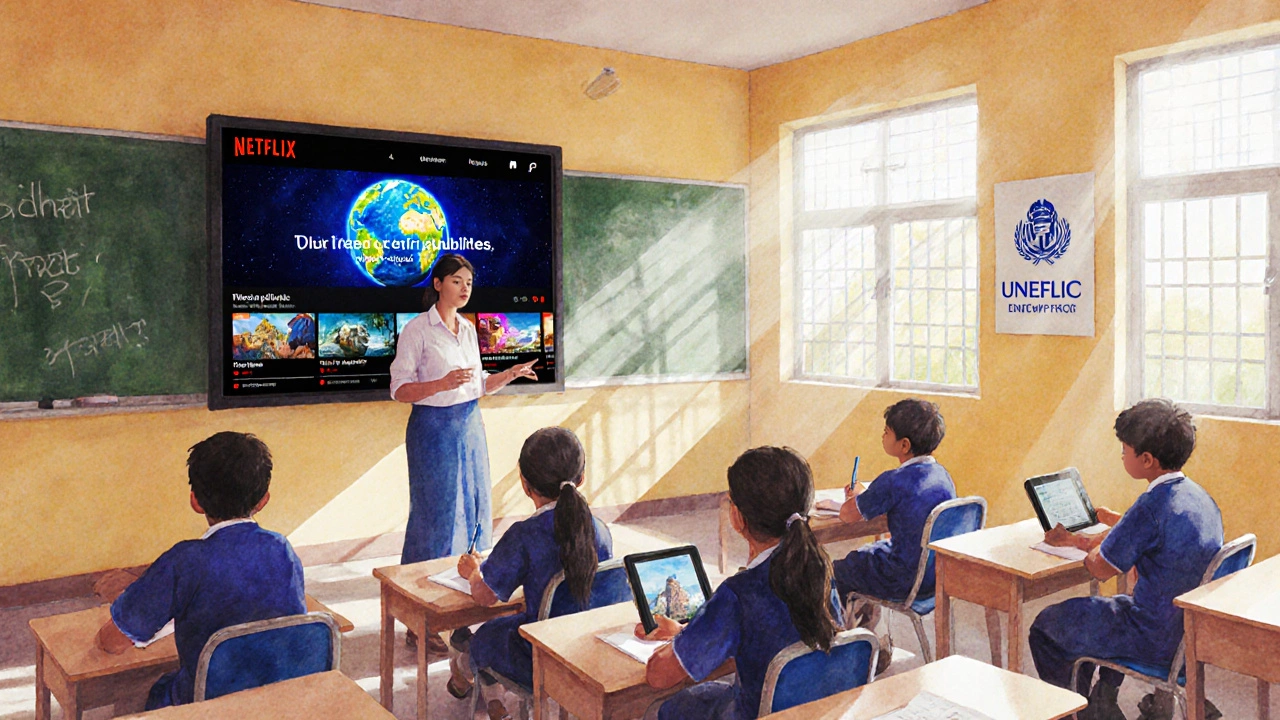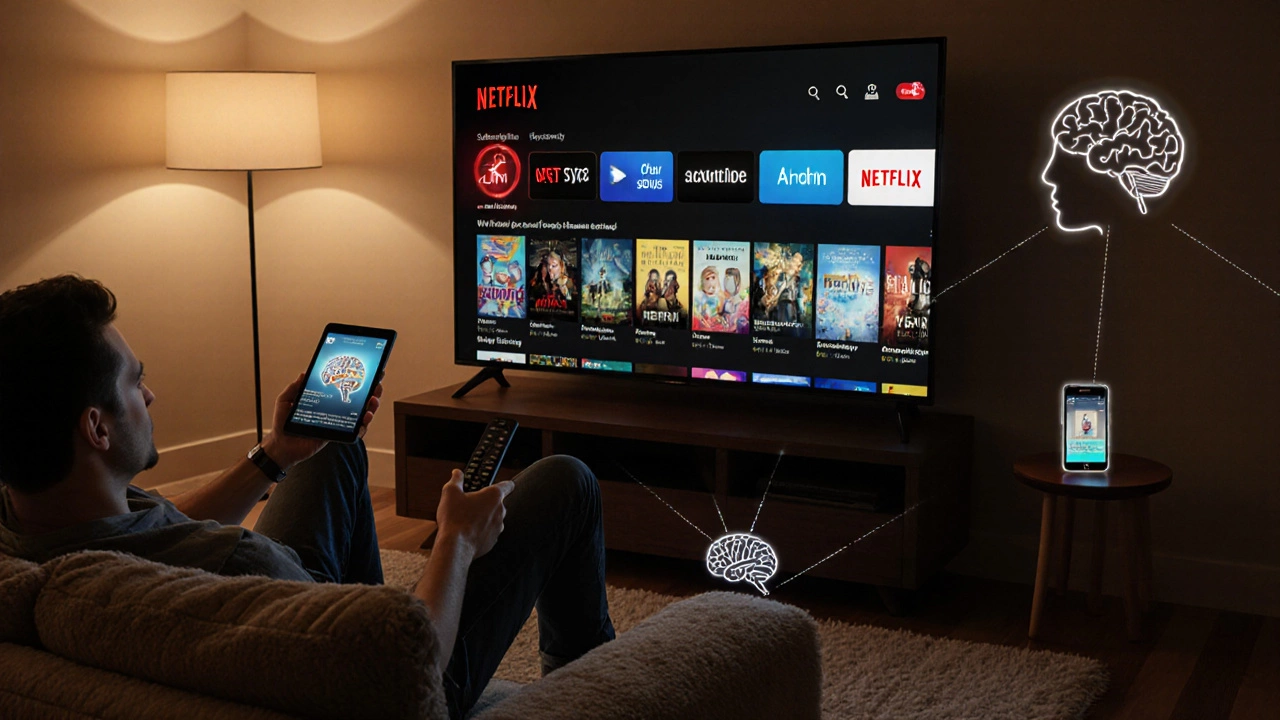Netflix Learning Content Finder
Find Your Educational Netflix Content
Enter a learning topic below to discover relevant Netflix titles with educational value
Recommended Learning Titles
When you think of Netflix digital platform, the first image that pops up is a binge‑watch session on a couch. But the service does more than stream movies; it operates on the same technical foundation that powers many e‑learning sites. Understanding whether Netflix qualifies as a digital platform helps educators, students, and casual viewers see the hidden learning value in their favorite shows.
What is a digital platform?
Digital platform is a technology‑driven ecosystem that connects content creators, distributors, and end users through a unified interface. It typically offers user accounts, personalized recommendations, API access for third‑party integration, and a scalable delivery network. In education, a digital platform hosts courses, tracks progress, and often supports assessments. The key idea is that the platform itself is a service layer, not just a collection of static pages.
Netflix - more than movies
Netflix started in 1997 as a DVD‑by‑mail service, but by 2007 it had transitioned to streaming. Today it streams over 230 million hours of video each month to more than 230 million subscribers worldwide. The service is built on a sophisticated cloud infrastructure that delivers video at 4K HDR quality, supports simultaneous streams, and adapts bitrate in real time. Its evolution from a simple video library to a full‑fledged service hub mirrors the trajectory of many e‑learning platforms.
Core features that make Netflix a digital platform
- Subscription model: Users pay a recurring fee, granting unlimited access to a catalog of titles. This recurring revenue fuels continuous improvements and new content production.
- Recommendation engine: Machine‑learning algorithms analyze viewing habits, ratings, and device data to suggest titles tailored to each profile.
- Multi‑device support: Apps for iOS, Android, smart TVs, gaming consoles, and web browsers share a single account, ensuring seamless experience across hardware.
- API ecosystem: Netflix’s internal APIs enable content tagging, playback control, and user analytics, allowing partner integrations and internal feature development.
- Content creation pipeline: Netflix Originals are produced in‑house, giving the platform control over the entire content lifecycle-from scripting to distribution.
All these elements are hallmarks of a digital platform, not just a media library.
How Netflix stacks up against traditional e‑learning platforms
| Feature | Netflix | Coursera | Udemy | Khan Academy | Skillshare |
|---|---|---|---|---|---|
| Primary content type | Video entertainment & documentaries | Academic courses (video, readings, quizzes) | Instructor‑created video lessons | Free educational videos | Creative‑focused video classes |
| Certification | None | Verified certificates (paid) | Certificate of completion (optional) | None | Certificate of completion |
| Assessment tools | None | Quizzes, peer‑graded assignments, projects | Quizzes, coding exercises (varies) | Practice exercises (limited) | Project‑based assignments (varies) |
| Personalisation | AI‑driven recommendations | Course suggestions based on career goals | Recommended courses based on past purchases | Learning pathways curated by experts | Skill‑based recommendations |
| Pricing model | Monthly subscription | Free audit / paid specialization | Pay‑per‑course (often discounted) | Fully free | Monthly or annual subscription |
The table shows that Netflix lacks the structured assessment and certification layers typical of e‑learning platforms. Yet its strength lies in high‑quality video production, a massive library, and a recommendation system that keeps learners engaged.
Using Netflix for learning: practical tips
- Identify educational titles: Documentaries, historical dramas, science series (e.g., "Our Planet", "The Social Dilemma").
- Create playlists: Group related episodes or films into a single list, then share the URL with a class.
- Leverage subtitles: Turn on closed captions in the target language to improve reading speed and vocabulary.
- Set learning objectives: Before watching, write down what you aim to learn (e.g., "understand the causes of the French Revolution").
- Follow up with activities: Use a short quiz, discussion prompt, or reflective journal after each viewing session.
These steps turn passive consumption into an active learning experience.
Benefits of treating Netflix as an e‑learning tool
- High production value: Professional cinematography and sound design make complex topics easier to grasp.
- Engagement: Story‑driven formats keep viewers interested longer than static slides.
- Accessibility: Offline download, multiple language subtitles, and mobile apps mean learning can happen anywhere.
- Scalable reach: One title can serve thousands of learners without additional cost.
When combined with structured activities, Netflix can complement traditional coursework, especially in subjects that benefit from visual storytelling.
Limitations and pitfalls
- Absence of graded assessments makes it hard to track mastery.
- Content is not organized by curriculum standards, so instructors must curate playlists carefully.
- No official certificates; learners seeking credentials need to supplement with accredited programs.
- Potential for distraction-binge‑watching unrelated genres can waste study time.
Awareness of these drawbacks helps educators design balanced lesson plans.

Future outlook: Netflix’s steps toward education
In 2023 Netflix launched an experimental series called "Netflix Learning" that paired documentaries with interactive quizzes hosted on an external site. By 2025 the company announced a partnership with UNESCO to produce climate‑change curricula for secondary schools. While a full‑blown Learning Management System is unlikely, the trend suggests Netflix will continue to bridge entertainment and education.
Quick checklist for educators
- Pick a learning goal and match it with a Netflix title.
- Build a playlist and share the link with students.
- Activate subtitles in the appropriate language.
- Design a post‑viewing activity (quiz, debate, project).
- Collect feedback to refine future selections.
Following this checklist turns Netflix into a low‑cost, high‑impact supplement for any classroom.
Frequently Asked Questions
Can Netflix replace a traditional e‑learning platform?
No. Netflix excels at delivering engaging video content, but it lacks structured assessments, certification, and curriculum alignment that most e‑learning platforms provide. It works best as a supplemental resource rather than a standalone solution.
What types of Netflix content are most suitable for learning?
Documentaries, science series, historical dramas, and any title with factual narration are prime candidates. Shows like "Our Planet", "Explained", and "The Great Hack" provide deep dives into specific topics.
How can I track student progress when using Netflix?
Create a simple spreadsheet or Google Form where students log the titles they watched, key takeaways, and scores on any follow‑up quiz you provide. This manual tracking compensates for Netflix’s lack of built‑in analytics.
Is there a way to embed Netflix videos into a learning management system?
Netflix does not offer an embeddable player for external sites. The usual workaround is to share the direct title link and ask learners to open it in their own browser or app.
Do subtitles help with language learning on Netflix?
Absolutely. Turning on subtitles in the target language exposes learners to new vocabulary while providing visual reinforcement. Studies show that combined audio‑visual exposure can improve retention by up to 30%.

Write a comment